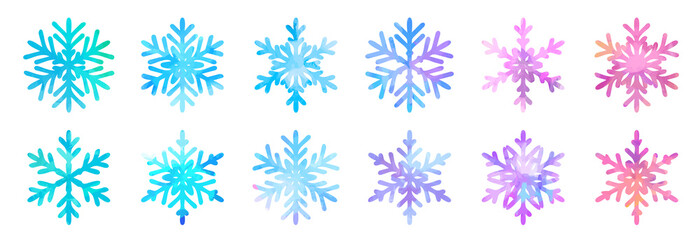When winter arrives and the world turns into a sparkling wonderland, one of the most magical sights is the snowflakes falling from the sky. Have you ever caught a snowflake on your mitten and wondered how it was made? Let’s dive into the science of snow and discover the fascinating world of snowflakes!
How Snowflakes Form
Snowflakes begin their journey high up in the clouds. When water vapor—tiny bits of water in the air—gets cold enough, it changes into ice crystals. This happens when the temperature is below freezing, which is 32°F (0°C). As these ice crystals grow, they collect more water vapor, which freezes onto their surface.
Here’s where the magic happens! The way these ice crystals form and grow is influenced by the temperature and humidity in the air. That’s why no two snowflakes are ever alike! Each snowflake has its unique shape and pattern based on the conditions it experienced while falling through the sky. Some might look like delicate stars, while others might appear like feathery shapes. Isn’t that cool?
Fun Snowflake Facts for Kids
- Infinite Variety: Scientists have found that snowflakes can have countless different shapes! Some common types include dendrites (the classic star shape), plates, and columns.
- Snowflakes in Numbers: A single snowstorm can produce billions of snowflakes, each one different from the last. Imagine catching one of those unique snowflakes!
- Big and Small: Snowflakes can vary in size. The largest snowflake ever recorded was 15 inches wide and fell in Fort Keogh, Montana, in 1887!
- Temperature Effects: The temperature affects the snowflake’s shape. Colder temperatures tend to create simpler, more angular shapes, while warmer temperatures produce more complex and intricate patterns.
The Science of Snow
Snow is not just fun to play in; it’s also an essential part of our ecosystem! Snow acts like a blanket, insulating the ground and helping plants survive winter. It provides a habitat for animals and is a vital source of water when it melts in the spring.
To learn more about snow and its wonders, check out NASA Climate Kids: The Science of Snow. This site is packed with fun facts and activities about snow and climate!
Snow-Themed Virtual Exhibits
Many science museums offer virtual exhibits about snow and winter. Explore the wonders of snowflakes and the science behind them by visiting some of these online resources. They often have fun activities, videos, and interactive lessons that can make learning about snow even more exciting!
Activity: Salt Snowflake Painting
What You’ll Need:
- White paper or cardstock
- White school glue
- Table salt
- Watercolors (or watered-down food coloring)
- Paintbrush
- Small cup of water
Instructions:
- Ask for Help: Before you start, ask your parents for help to make sure you have everything you need.
- Draw Your Snowflake: Use the white school glue to draw the shape of a snowflake on your paper. You can make it any way you want! Remember, every snowflake is unique, just like you!
- Add the Salt: While the glue is still wet, sprinkle salt all over the glue. Make sure to cover all of it. After that, gently shake off the extra salt into a bowl or the trash.
- Let It Dry: Wait for the glue and salt to dry completely. This might take about 1-2 hours. You can ask your parents to help check if it’s dry before you move on.
- Paint Your Snowflake: Once everything is dry, dip your paintbrush in the watercolor paint and gently touch it to the salt-covered snowflake. Watch how the color spreads and looks pretty on the salt! You can use different colors to make it super colorful!
- Show Off Your Art: Let your painting dry completely, then find a special place to show it off!
Fun Fact: This craft is a cool way to see how salt crystals can look like real snowflakes! Just like snowflakes, salt forms special patterns. Have fun creating and learning about winter!


Leave a Reply